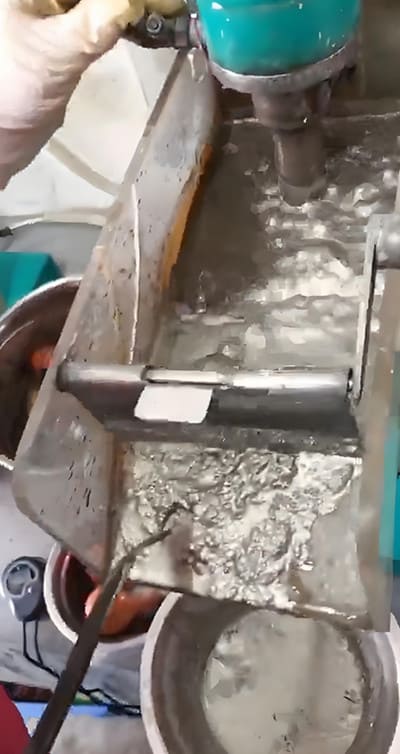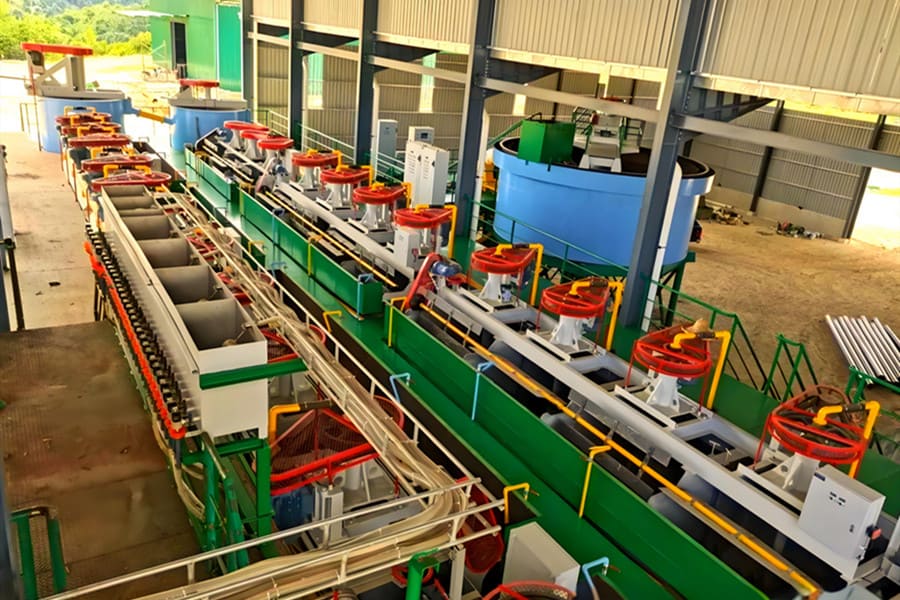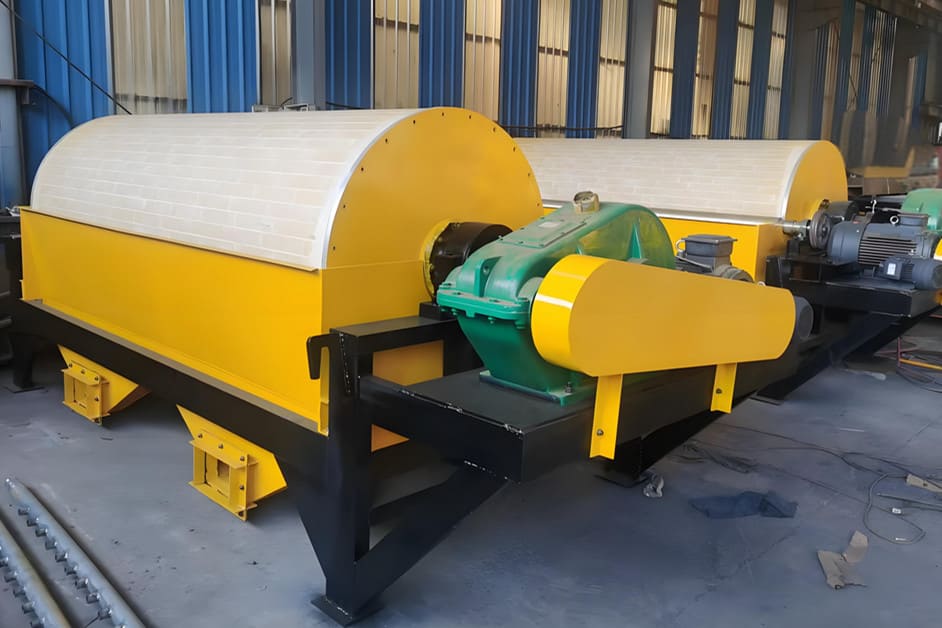Polymetallic ores also known as multimetal ores, refer to ores containing metals such as copper, zinc, lead, gold, and silver, which play an important role in industrial production and economic construction. However, in the mining and beneficiation process of polymetallic ores, there are problems such as complex ore composition, variable properties, and low beneficiation recovery rate. Therefore, advanced beneficiation technology is needed to improve the beneficiation recovery rate and the mining efficiency of mines.
Core Technologies of Polymetallic Ore Beneficiation
The core technologies of polymetallic ore beneficiation mainly include: flotation separation technology, leaching technology, desulfurization technology, ion exchange technology, gravity beneficiation technology, and magnetic separation technology.
Flotation
Flotation separation technology is the most widely used technology in polymetallic ore beneficiation. It achieves the separation of metal minerals by adding certain reagents to polymetallic ores in water. Different metal minerals react chemically with the reagents, being adsorbed by bubbles and floating up. The selective separation ability of flotation separation technology makes it widely used in polymetallic ore beneficiation.
Leaching
Leaching technology is to put polymetallic ores into a certain solution so that the metal minerals in it are separated from other substances in the solution. Leaching technology is suitable for some polymetallic ores with less metal content that are difficult to float. Its main advantages are a high recovery rate and a high degree of automation.
Desulfurization
Desulfurization technology is a technology for the oxidation, conversion, and removal of sulfides in polymetallic ores. Its purpose is to reduce the amount of garbage generated in the subsequent ore processing link and reduce the risk of environmental pollution. The use of desulfurization technology can not only reduce the sulfur content of oxidized copper ore but also reduce the loss of valuable metals such as copper and zinc, thereby improving its mineral processing recovery rate.

Ion Exchange
Ion exchange technology refers to the process of ion exchange, which allows the charged ions suspended in water to recombine to produce new ion molecules, thereby achieving the purpose of extracting metals. The use of ion exchange technology can effectively separate and extract metal ions such as chromium, copper, and nickel in polymetallic ores.
Gravity Separation
The working principle of gravity mineral processing technology is to use gravity to make the heavier and denser mineral particles settle to the lower part of the sedimentation tank and discard low-grade or difficult-to-separate minerals. The use of gravity mineral processing technology can improve the recovery rate in polymetallic mineral processing, reduce investment costs, and save money.
Magnetic Separation
Magnetic separation technology mainly utilizes the magnetic differences of ferromagnetic materials to perform magnetic separation, separating ferromagnetic materials from non-ferromagnetic materials in polymetallic ores, thereby achieving the effect of grading and separating valuable metals such as copper and lead in complex polymetallic ores.
In summary, the processing of multimetal ores is crucial for maximizing the recovery of valuable metals while minimizing environmental impacts and costs. The adoption of advanced mineral processing techniques, including flotation, leaching, desulfurization, ion exchange, gravity separation, and magnetic separation, is essential for overcoming the inherent challenges associated with multimetal ore extraction and beneficiation. As the demand for these metals continues to grow, implementing efficient and effective processing technologies will play a significant role in ensuring sustainable mining practices and economic viability.
Case Study: Copper-Gold-Iron Sulfide Ores Beneficiation
The intricate relationship between gold, copper, and iron sulfide minerals in a specific copper-gold-iron sulfide ore poses significant challenges during the mineral processing stage. The processing difficulties predominantly stem from the increased production of Cu²⁺ ions during milling, which can activate pyrite (iron sulfide minerals). This activation complicates the separation of copper and sulfur, potentially leading to the unintentional inclusion of pyrite in the copper-gold concentrate, ultimately affecting its grade. Moreover, the relatively low total iron grade in the ore amplifies the challenges associated with comprehensive recovery.
Challenges Faced in Mineral Processing
Initial experimental explorations revealed that implementing a process flow of flotation followed by magnetic separation yielded copper-gold concentrates with gold and copper recovery rates of around 35%. Efforts to optimize reagent schemes increased these recovery rates by less than 5%. Conversely, employing a magnetic separation followed by a flotation process resulted in significant losses of gold and copper from the iron concentrate. This loss can be attributed to the close association of chalcopyrite and magnetite, leading to the involuntary inclusion of chalcopyrite when producing iron concentrates.
Exploring Alternative Processing Strategies
Given the unsatisfactory flotation and magnetic separation indicators from both method sequences, a more integrated approach appeared warranted. Notably, the original ore contained over 20% of copper in the form of oxides. This prompted a reconsideration of processing strategies, specifically proposing a mixed flotation process of sulfide-oxygen for producing copper-gold concentrates while simultaneously recovering iron from the tailings. Such an approach not only enhances resource utilization but also provides considerable economic benefits for the enterprise.
Chemical Analysis and Recovery Value Assessment
Chemical multi-element analyses of the ore indicated that the valuable elements worth recovering were gold (Au), copper (Cu), and iron (Fe). The chemical analysis underscores the need for a processing technique that can effectively liberate these metals while minimizing the loss of valuable components.

Flotation Process Overview
The proposed flotation process consisted of an initial roughing stage, followed by two scavenging stages and four cleaning stages. This meticulous approach led to the production of copper-gold mixed concentrates with notable quality indicators—17.31% copper content and a copper recovery rate of 65.34%. Additionally, the gold content in the concentrate was measured at 52.40 g/t, with a commendable gold recovery rate of 82.15%. These metrics demonstrate the efficacy of the flotation process in maximizing the recovery of valuable metals from the ore.
Tailings Processing and Iron Recovery
The flotation tailings underwent weak magnetic separation, encompassing a coarse selection followed by a refinement stage. The magnetic separation process returned iron concentrates with an iron content of 64.20% and an iron recovery rate of 66.64%. This indicates that, despite the complex mineral associations, it is feasible to recover significant amounts of iron alongside copper and gold.

The Sulfide-Oxygen Mixed Flotation and Magnetic Separation Process
The experimental implementation of the sulfide-oxygen mixed flotation combined with magnetic separation demonstrated promising results. The process not only achieved substantial recovery rates for both gold and copper but also provided an efficient solution for iron recovery, thus addressing the challenges associated with the low-grade iron content in the ore. The successful application of this integrated processing method highlights its potential to facilitate the comprehensive recovery of multi-metal resources.
Conclusion
In conclusion, the synergistic application of sulfide-oxygen mixed flotation alongside magnetic separation has proven effective in addressing the complex challenges presented by copper-gold-iron sulfide ores. This innovative approach not only enhances the recovery rates of gold and copper but also enables the efficient extraction of iron, thereby optimizing the overall resource recovery from the ore. By developing versatile and adaptive processing strategies, mining enterprises can better capitalize on the value embedded in their mineral resources, ultimately leading to improved economic outcomes and sustainable operations.
As the mining industry continues to evolve, the insights gained from implementing multifaceted processing techniques will be pivotal in navigating the complexities of modern mineral processing, ensuring both economic stability and environmental responsibility. Future research should continue to refine and enhance these processes, exploring new methodologies to further improve metal recovery efficiencies while reducing operational costs and environmental impacts.
